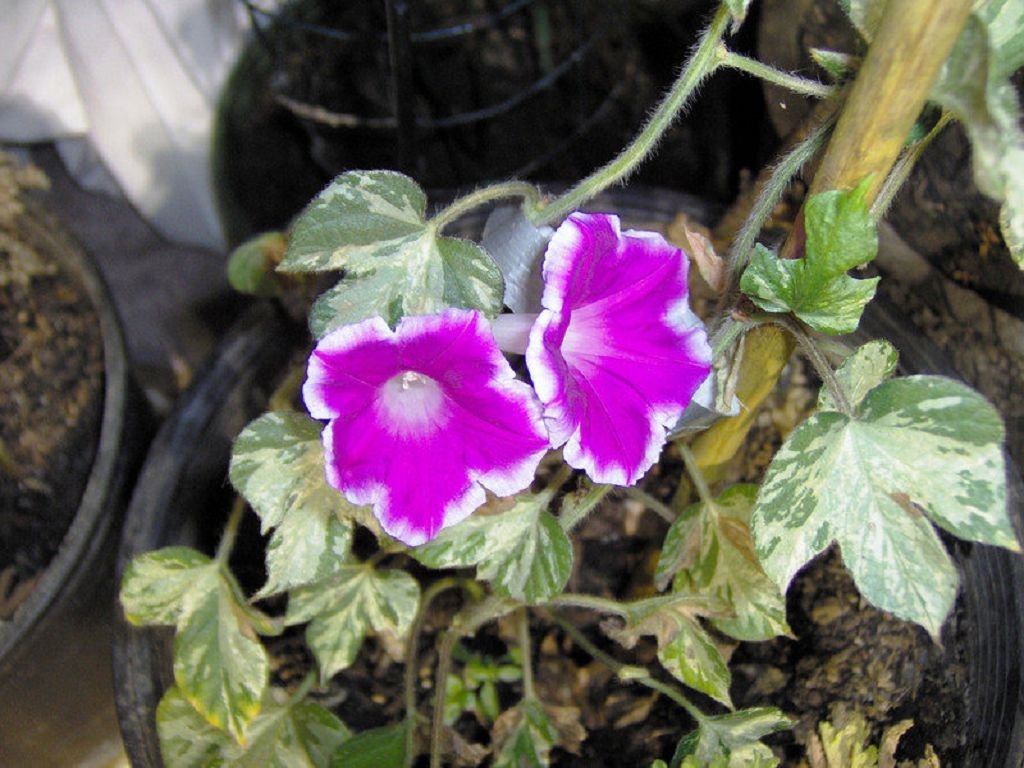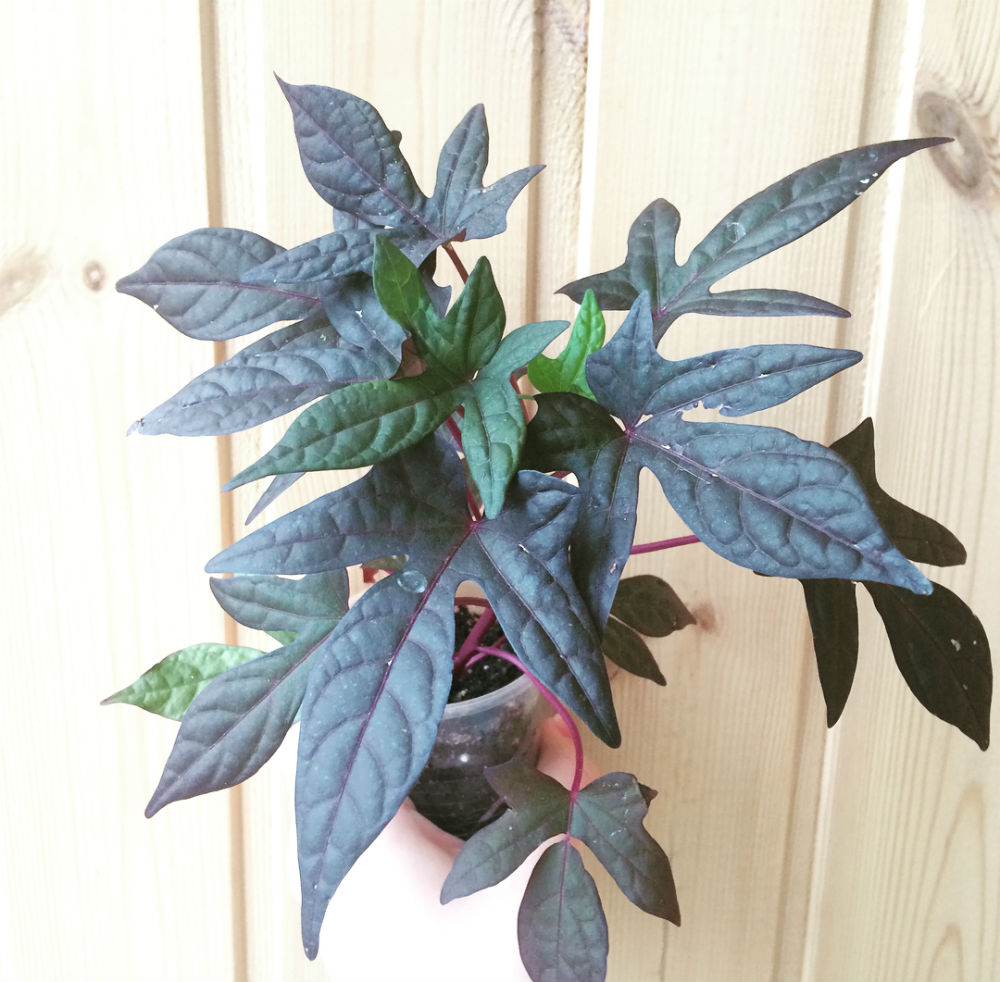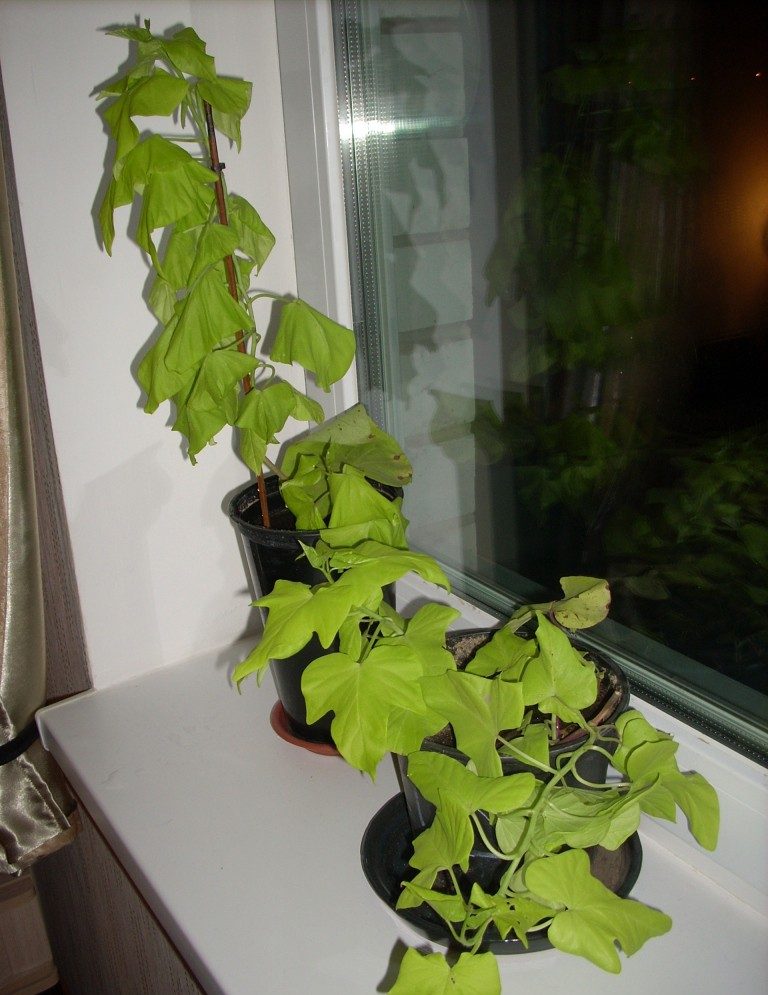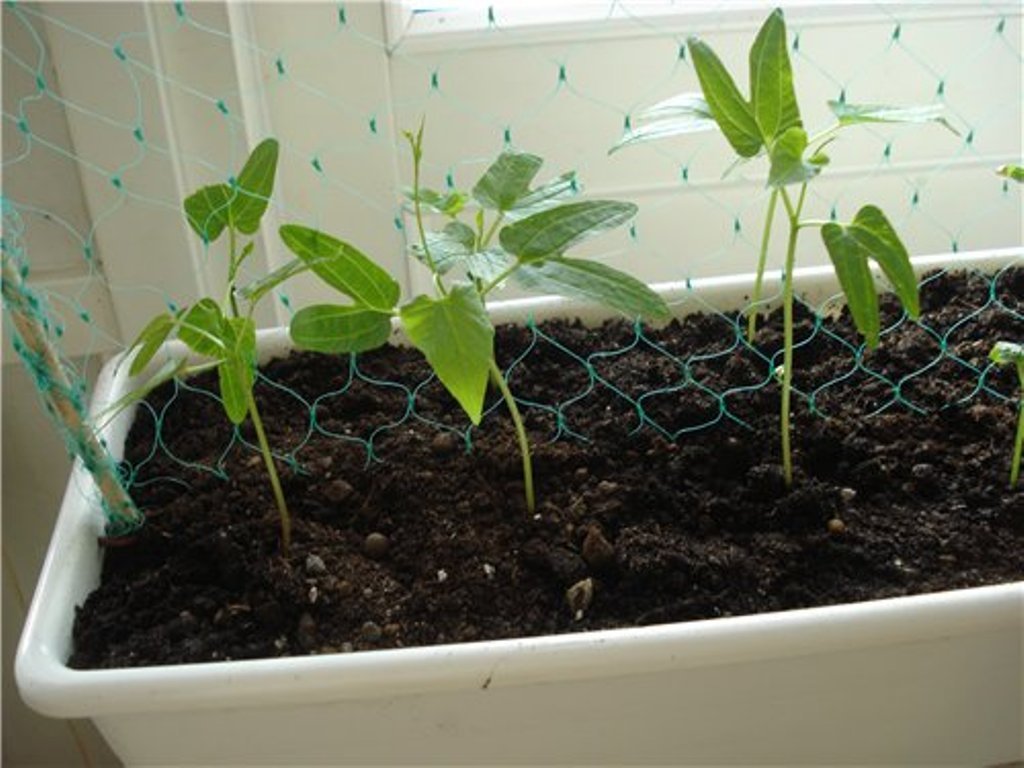Content:
In urban landscaping, as well as in landscape design, the morning glory sweet potato plant, also known as "sweet potato", is gaining popularity. In tropical and subtropical climates it is grown as a vegetable, and in colder regions as an ornamental crop. The attention is drawn to the leaves of this exotic flower.
Description and agricultural technology
Morning glory sweet potato (Ipomaea batatas) belongs to the Bindweed family, originating from Mexico and Central America. Half of all existing species of this flower can be found there. Since ancient times, morning glory tubers have been eaten. Now it is an ornamental perennial plant, which is cultivated as an annual in temperate latitudes. Known as decorative leaf morning glory. The leaves are heart-shaped or wide-spread lobes.
It grows up to 30 cm in height and throws out lashes about 2.5 m long. It blooms with spectacular axillary flowers, but the varieties currently bred do not form flowers. The leaves are large, up to 15 cm, very decorative. Their color is varied - from green and yellow to red and purple. There are also variegated varieties.
The plant is planted in open ground, more often with the help of seedlings, when the air temperature is about + 20 ° C, and the soil is + 15 ° C. In the middle lane, this is approximately the end of May. For landing, choose places that are well lit by the sun, but inaccessible to the winds.
It is better to select the soil with neutral acidity, sandy loam or loamy. Land for planting is prepared in the fall - it is dug up and fertilized with humus. The use of potassium dressings and superphosphates is allowed. Soil with high acidity is neutralized with lime. In the spring, immediately before the start of planting flowers, the soil is loosened and ammonium nitrate is applied. Moisture is required for the plant in a small amount, it will survive the dry time.
Popular varieties of deciduous varieties of morning glory sweet potato:
- Ligth Green - bright green leaves, five elongated and sharp blades at the tips;
- Sweet Caroline Bronze - bronze shade with five lobes on heavily cut leaves;
- Sweet Caroline Purple - the leaves are also lobed, have a rich purple color;
- Sweet Heart Red - the leaf looks like a maple, the color is greenish with a purple tint, the young leaves are more brown in color.
Morning glory sweet potato grows well and is often used as a ground cover. The stems are able to root at the site of the nodes. Sometimes Ipomoea is lifted from the ground on a low support. The most popular way to grow it is an ampel plant, that is, contained in pots, hanging baskets or containers.
Basically, the flower is grown in open ground, but there are varieties designed to keep the house on the windowsill or on the balcony:
- Kumara Red - needs good lighting and warmth. At home, you need to install an additional light source. The leaves are lush and large, the tubers are oval, yellow.
- Burgundy is an early variety. The leaves are large, the inflorescences have a pleasant smell. The color of the tubers is deep red.
- Purple is an early variety suitable for keeping in an apartment. The leaves are dark green, the bush is strong and powerful.The plant is resistant to many diseases.
Before planting a flower, you need to decide on its purpose. There are a lot of sweet potato hybrids and it is important to understand what it is for. All hybrids can be divided into groups:
- Dessert - this includes varieties: Amish Red, Korean purple, Chestnut.
- Vegetables - Beuregarde, California Gold, Japanese, South Queen.
- Stern - White bouquet, Brazilian.
Dessert group of varieties and has a spicy aftertaste of melon, pumpkin, banana or carrot. This sweet potato is used to make jams, various desserts and wines. The vegetable group can easily replace regular potatoes. In addition, they have a richer and more delicate taste. The fodder yam is grown for animal feed.
Reproduction of culture
Morning glory reproduces mainly in two ways:
- Tubers.
In the fall, the tubers of the plant must be dug up and placed in a cool place. In December, buds begin to appear on it. Then the tuber is planted in a container with soil. After the flower sprouts, you can divide and root the shoots in separate pots. In the spring, morning glory is planted in open ground or left in containers and placed in the open air.
This method is suitable if there are good large tubers - you can get up to 20 plants from one. In most ornamental varieties, they are small and develop extremely slowly. In the first year, it will not be possible to obtain breeding material, the morning glory must be cultivated as a perennial.
- Cuttings.
Cuttings can be cut from sprouted tubers and rooted, as well as from purchased plant seedlings, while capturing two leaf nodes. They are brought into a room with an average temperature of + 23 ° C with a good level of illumination. Around March, shoots that are too elongated in room conditions are again cut for cuttings, already receiving their seedlings. In early June, the plants are planted in open ground. The distance between them is maintained at 20 cm.
Growing morning glory from seeds is also practiced, but this method is not very common.
Planting seeds: rules for planting seeds
The seeds of this ornamental plant are colored black or brown and have a round shape. They remain viable for 4 years. The seed is soaked in warm water for a day, and then planted on seedlings. Can be disinfected in a solution of potassium permanganate. If the grains do not swell, they must be pierced with a needle and placed back in water for a day. This procedure is performed in the second half of February. Seeds may take a long time to germinate; in morning glory, this process is not fast.
Planting perennial morning glory sweet potatoes and subsequent care are carried out as follows. The land should be fertile and have a loose structure. A substrate consisting of sand, turf and humus is suitable. Ordinary garden soil will not work - it is poor in nutrients and can be a source of infection with diseases and pests.
The soil is placed in small pots and 2-3 seeds are planted there. They are deepened by 1.5 - 2 cm, tamped and watered. Then put in a warm place and cover with foil. Allows to cover plantings with glass. It is necessary to take care of the plants in a timely manner, water regularly, not allowing the earth to dry out.
Crop care, flowering
Ipomoea agrotechnics is quite simple and includes the following rules:
- Watering should be done regularly and in moderation. The flower does not tolerate stagnation of water. Since September, morning glory is watered only after the soil dries up.
- During the period of active growth of morning glory, additional feeding is needed. For the first time, it is ammonium nitrate, and then mineral complexes.For flowering varieties, it is important not to apply a large amount of nitrogen fertilizers during budding, otherwise the plant will use all its strength to form leaves.
- The bushes must be cleaned - remove old dried leaves and shoots. Pruning is done in autumn and spring. Provided that the plant is cultivated as a perennial.
The flower has a number of diseases and pests to which it is exposed with improper care. If morning glory is watered too much, fungal diseases appear. From them it is necessary to treat the soil with a fungicide, and remove the affected parts of the plant. In the case when it comes to soft rot or root, as well as in case of a viral infection, morning glory cannot be saved. It must be destroyed so that the disease does not spread to healthy plantings.
Over-watering and cold weather may cause white blisters on the leaves. To avoid this, the flower is placed in bright areas warmed by the sun.
Of the pests, morning glory is attacked by aphids and spider mites. A soap solution helps against aphids, and the tick is washed off with water. In case of severe damage, the flower can be treated with insecticides.
Beautiful flower arrangements are created from morning glories in combination with other plants. The best neighbors for her will be:
- petunia purple or pink;
- europhobia;
- lobularia sea;
- large-flowered purslane;
- decorative cereals.
Wintering a plant: how to prepare a flower for the cold season
Ipomoea in the climate of the middle zone is grown as an annual - it dies at the first cold weather. After flowering, the ground part of the plant is removed, and the ground is dug up. Morning glory is capable of self-seeding and can grow in the same place the next year. If you still want to preserve the plant, they dig it up and keep it indoors in winter at a temperature of about + 20 ° C. It is important to provide the morning glory with sufficient light.
Despite the fear of frost and the lack of flowering, many gardeners grow morning glory for the decorative foliage. If you wish, you can even eat its tubers, although they are small in size in decorative varieties.
















